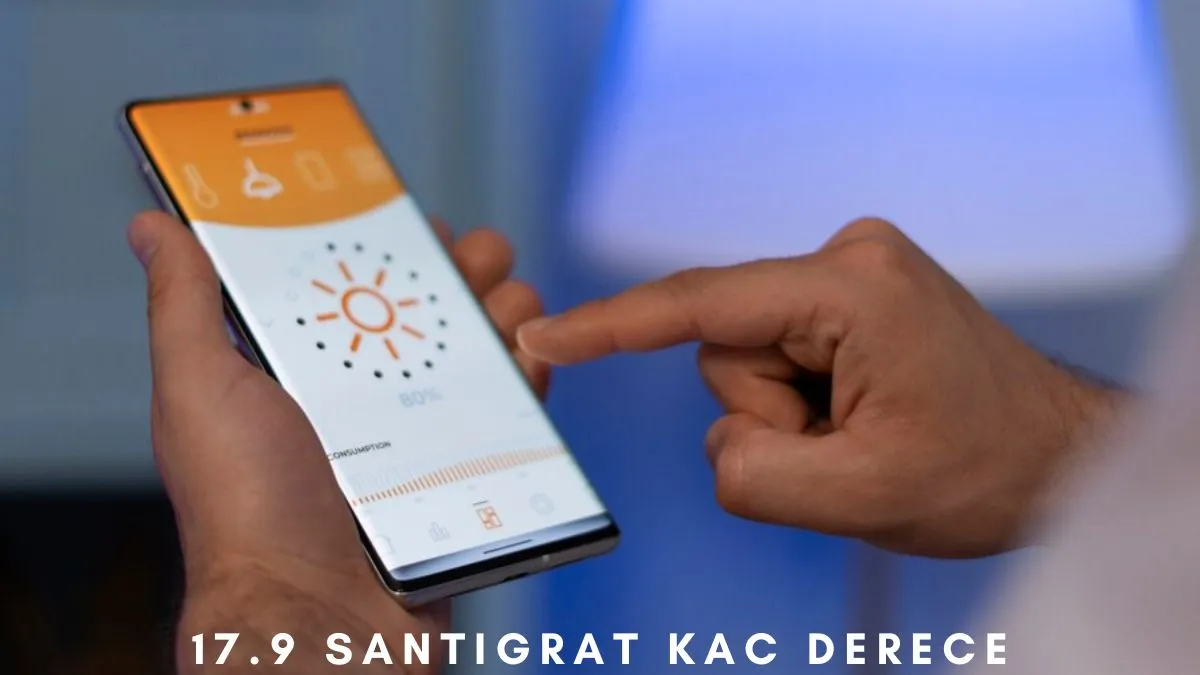General
Understanding Simpciry: What It Means When a Site Is Down

In today’s digital age, website uptime is crucial for maintaining a positive online presence. When a site like Simpciry goes down, it can lead to confusion, frustration, and even financial loss. This article will explore what it means when Simpcity.st is down, how to identify the reasons behind it, and the steps you can take to resolve such issues. We’ll dive deep into the HTTP status codes, common causes of downtime, and provide actionable advice for both users and site administrators.
Introduction to Simpcity.st and Website Downtime
When you try to access a website and it doesn’t load, it’s not only inconvenient but can also raise concerns about the site’s reliability. This scenario is especially true for platforms like Simpciry where uptime is essential for maintaining user trust and engagement. In this article, we’ll break down what it means when a site like Simpcity.st is down, the technical reasons behind it, and what steps can be taken to address and prevent such issues.
You might also like:Cursed-Memes.com Technology
Importance of Website Uptime
Website uptime refers to the time a website is operational and accessible to users. For any online platform, particularly one like Simpcity.st that serves a specific community or audience, uptime is critical. Downtime, on the other hand, can lead to loss of users, revenue, and credibility. Understanding the reasons behind downtime and how to mitigate it is crucial for any website owner.
Overview of Simpcity.st
Simpcity.st is a platform that serves a particular niche audience. Whether it’s for sharing content, providing services, or engaging with a community, the site’s availability is paramount. When Simpcity.st is down, users might be left wondering what happened and whether the issue is temporary or more severe.
Understanding HTTP Status Codes
One of the first steps in diagnosing why a site like Simpcity.st might be down is understanding HTTP status codes. These codes are responses from the server indicating the result of the request made by the user’s browser.
What Are HTTP Status Codes?
HTTP status codes are three-digit numbers that provide information about the status of the request made to a web server. They play a critical role in web communication, helping users and administrators understand what is happening when trying to access a website.
Categories of HTTP Status Codes
HTTP status codes are divided into five categories, each indicating a different type of response.
1xx Informational Responses
These codes indicate that the request was received and understood, and that the process is continuing.
2xx Success
These codes indicate that the request was successfully received, understood, and accepted.
3xx Redirection
These codes tell the client that further action needs to be taken to complete the request. For example, the requested page may have been moved to a new location.
4xx Client Errors
These errors occur when there is a problem with the client’s request. The most common 4xx error is the 404 “Not Found” error, which indicates that the requested resource could not be found.
5xx Server Errors
These errors occur when the server fails to fulfill a valid request. A common example is the 500 “Internal Server Error,” which indicates a generic problem with the server.
Common Reasons Why Simpciry.st Might Be Down
There are several reasons why Simpciry.st might experience downtime. Understanding these can help in diagnosing and fixing the problem quickly.
Server Issues
One of the most common reasons for a website being down is server-related problems. This can include server overload, hardware failures, or misconfigurations.
DNS Problems
DNS (Domain Name System) issues can prevent users from accessing a website. This could be due to DNS server failures or misconfigurations that make it impossible for users to reach the site.
Network Connectivity Issues
Sometimes, the problem might not be with the server or the website itself but with the network connecting the user to the site. This could involve issues with ISPs or internet routing problems.
Site Maintenance or Updates
Websites often go down temporarily for scheduled maintenance or updates. If Simpciry.st is down, it could be undergoing routine maintenance to improve performance or implement new features.
Security Breaches and Attacks
In some cases, websites are taken down by malicious actors through DDoS (Distributed Denial of Service) attacks or other security breaches. These can render the site inaccessible until the issue is resolved.
How to Check If Simpcity.st Is Down
If you suspect that Simpcity.st is down, there are several methods you can use to confirm this.
Using Online Tools to Check Website Status
There are various online tools available that can check the status of a website. These tools can quickly tell you if the site is down for everyone or just for you.
Manual Methods to Identify Downtime
You can also try accessing the site from different devices or networks. If the site loads on one device but not another, the problem might be with your connection rather than the site itself.
Understanding the Results of Downtime Tests
Once you’ve tested the site’s status, interpreting the results is key. If the site is down for everyone, it’s likely a server or network issue. If it’s down only for you, the problem might be local, such as a DNS issue or a problem with your ISP.
Steps to Take When Simpcity.st Is Down
When Simpcity.st is down, different steps should be taken depending on whether you’re a user or a site administrator.
For Users
Check Your Internet Connection
Before assuming that the site is down, make sure your internet connection is working properly. Try visiting other websites to see if they load.
Try Accessing the Site from Different Devices
If you have multiple devices, try accessing Simpciry.st from another one. This can help determine if the problem is with your device or the site itself.
Contact the Site Administrator
If you’re still unable to access the site, reach out to the site administrator. They might already be aware of the issue and working to resolve it.
For Site Administrators
Investigate the Root Cause
As a site administrator, your first step should be to identify the root cause of the downtime. This might involve checking server logs, DNS settings, or network configurations.
Communicate with Users
It’s important to keep users informed during downtime. Providing regular updates on the status of the issue can help maintain trust and prevent frustration.
Implement Solutions and Prevent Future Downtime
Once the issue is resolved, take steps to prevent similar problems in the future. This might involve upgrading server hardware, improving network infrastructure, or implementing better security measures.
Conclusion
Website downtime is a frustrating experience for both users and administrators, but understanding the underlying causes can help mitigate its impact. For a site like Simpciiry maintaining uptime is crucial for user trust and engagement. By being proactive and responsive, site administrators can minimize downtime and ensure a smoother experience for their users.
FAQs
What does an HTTP 404 error mean?
An HTTP 404 error indicates that the requested resource could not be found on the server. This is usually due to a broken link or a page that has been moved or deleted.
How can I tell if Simpcity.st is down for everyone or just me?
You can use online tools like “Down For Everyone Or Just Me” to check if a site is down globally or only for you.
What should I do if Simpcity.st is down for an extended period?
If Simpciry is down for a long time, try reaching out to the site administrator for updates. You can also check their social media channels for any announcements.
Can website downtime affect SEO rankings?
Yes, prolonged website downtime can negatively impact SEO rankings as search engines may penalize sites that are frequently inaccessible.
How can Simpcity.st prevent future downtime?
To prevent future downtime, Simpcirycan invest in better server infrastructure, implement robust security measures, and conduct regular maintenance checks.
General
Understanding What 17.9 Santigrat Kac Derece: A Complete Guide

Temperature affects us daily, from what we wear to how comfortable we feel indoors or outdoors. But what exactly does a temperature like 17.9°C (64.2°F) represent, and how can we interpret it? This article will explore the context, applications, and impact of 17.9 Santigrat Kac Derece in various settings and its relevance in daily life.
What Does 17.9°C Represent?
Explanation of Celsius as a Temperature Scale
The Celsius scale, developed by Swedish astronomer Anders Celsius in the 18th century, is one of the most widely used temperature scales worldwide. Celsius is based on the freezing point (0°C) and boiling point (100°C) of water under standard atmospheric pressure, making it easy to visualize temperatures we encounter daily.
How to Visualize 17.9°C
To visualize 17.9°C, imagine a crisp, slightly cool day—perfect for light layers but not yet chilly. For reference, standard room temperature is around 20-22°C, so 17.9°C feels a touch cooler than the average indoor setting.
Contextualizing 17.9°C in Different Environments
Indoor vs. Outdoor Temperatures
Indoors, 17.9°C might feel a bit cooler, especially in humid or poorly insulated spaces. Outdoors, this temperature is often associated with early spring or fall days, suitable for lightweight clothing with a possible extra layer for comfort.
Humidity and Wind: Key Factors in Perceived Temperature
Humidity and wind greatly affect how warm or cool a temperature feels. In dry conditions, 17.9°C might feel pleasant and refreshing. With high humidity or wind, however, it could feel cooler, requiring warmer clothing to maintain comfort.
Scientific Background of the Celsius Scale
Origins of the Celsius Scale
Anders Celsius introduced the Celsius scale in 1742. Originally, the scale was inverted, with 0°C as the boiling point and 100°C as the freezing point. This was later reversed to align with natural perception.
Why Celsius is Commonly Used Worldwide
Celsius remains widely used due to its simplicity, particularly for scientific purposes, as it aligns with the metric system, aiding in easy global standardization.
How to Convert Celsius to Other Temperature Units
Conversion to Fahrenheit
To convert 17.9°C to Fahrenheit, use the formula:
(17.9 × 9/5) + 32 = 64.2°F
So, 17.9°C equals about 64.2°F, which in the U.S. would typically be considered a moderate temperature.
Conversion to Kelvin
For scientific calculations, Celsius is often converted to Kelvin, where 0°C equals 273.15 K.
17.9 + 273.15 = 291.05 K
Comparing 17.9°C to Other Common Temperatures
Comfortable Room Temperature
Standard room temperature, around 20-22°C, is slightly warmer than 17.9°C. This means that, indoors, 17.9°C might feel a bit brisk, prompting many to reach for a sweater or light blanket.
Seasonal Temperatures (Spring, Fall)
This temperature is often encountered in spring or fall, times of year marked by moderate warmth and mild coolness. It’s a temperature commonly found in temperate regions during the change of seasons.
Practical Implications of 17.9°C
Impact on Clothing Choices
At 17.9°C, layering is often best. A light jacket, sweater, or comfortable layering options allow flexibility, especially outdoors, where temperatures can fluctuate based on sun exposure or wind.
Effects on Health and Comfort
17.9°C can be ideal for physical activity, as it’s not too warm to cause overheating, yet cool enough to keep people comfortably energized.
17.9°C and Global Climate Variations
How Different Regions Experience 17.9°C
Regions with varying climates will perceive 17.9°C differently. For instance, in tropical zones, this might be a rare, chilly evening, while in temperate regions, it’s more typical and considered mild.
17.9°C in Urban vs. Rural Settings
Cities, with concrete structures and vehicle emissions, may feel slightly warmer at 17.9°C compared to rural areas. The lack of natural surroundings in cities can make temperatures feel intensified due to heat absorption.
Effect of 17.9°C on Daily Activities
Sports and Outdoor Recreation
Mild temperatures like 17.9°C are ideal for running, hiking, or casual walks, allowing for comfortable movement without the risk of overheating.
Productivity and Indoor Comfort
Indoors, slightly cooler air can stimulate focus and productivity. At 17.9°C, people tend to feel awake and alert, which may improve work performance.
Weather and Seasonal Patterns Around 17.9°C
Typical Weather Conditions for 17.9°C
Typical weather patterns at this temperature often feature clear or partly cloudy skies, making for pleasant days or cool, refreshing evenings.
Seasonal Patterns and How They Affect This Temperature
In spring and fall, temperatures often linger around 17.9°C during morning or evening hours, offering a gentle introduction to seasonal changes.
Benefits of Maintaining 17.9°C Indoors
Energy Efficiency in Homes
Maintaining an indoor temperature close to 17.9°C can be energy-efficient, reducing heating costs in cooler months without sacrificing comfort.
Optimal Comfort and Health Benefits
This temperature supports restful sleep and can reduce dry skin caused by excessive indoor heating, especially during colder months.
How 17.9°C Impacts Energy Use and Costs
Comparison of Heating vs. Cooling Needs
At 17.9°C, minimal heating is often required, which saves energy compared to more intense heating or cooling demands.
Cost Efficiency in Different Climates
In moderate climates, maintaining homes close to 17.9°C can lead to lower utility bills. In colder areas, a slight increase in heating may be needed, but costs remain manageable.
17.9°C in Relation to Climate Change
Environmental Impact of Temperature Changes
As global temperatures rise, seasonal temperatures of 17.9°C might shift, affecting ecosystems, plant growth, and weather patterns over time.
Changes in Average Temperature Across Seasons
In many regions, shifts in seasonal temperatures are becoming more noticeable. This can impact the frequency of mild temperatures like 17.9°C as seasonal averages increase.
Practical Tips for Comfort at 17.9°C
Dressing in Layers
Layering is key for temperatures around 17.9 santigrat kac derece especially when moving between indoors and outdoors or in changing weather conditions.
Maintaining Indoor Comfort
Using blankets, light sweaters, or throws can help maintain comfort without needing to adjust thermostats, conserving energy and keeping costs low.
Conclusion
Understanding temperatures like 17.9 Santigrat Kac Derece enhances our ability to prepare for and appreciate different climates and seasons. Whether considering daily activities, energy costs, or personal comfort, 17.9°C remains a versatile and moderate temperature that suits many environments and lifestyles.
FAQs
1. How does 17.9°C compare to typical room temperature?
It’s a few degrees cooler than typical room temperature, which is around 20-22°C.
2. Is 17.9°C a common outdoor temperature?
Yes, it’s common during spring and fall in temperate regions, providing comfortable conditions for outdoor activities.
3. How does humidity affect the feel of 17.9°C?
High humidity can make it feel warmer, while low humidity and wind can make it feel cooler.
4. What is 17.9°C in Fahrenheit?
17.9°C equals approximately 64.2°F.
5. How can I be comfortable at 17.9°C indoors?
Layering, blankets, and moderate heating adjustments can keep you comfortable without excessive energy use.
Business
Discovering Girma Zekpa: A Trailblazer in Business, Education, and Cultural Preservation

Girma Zekpa stands as an inspiring figure whose contributions have significantly impacted business, education, and cultural preservation. His work spans multiple sectors, embodying a commitment to innovation, social progress, and sustainability. Through his initiatives, Zekpa has improved lives, bridged gaps, and inspired communities around the world.
The Early Life of Girma Zekpa
Born into a community rich in cultural heritage, Zekpa’s upbringing was shaped by strong values of education and service. He displayed an early interest in understanding the connections between tradition and modernity, which later informed much of his work.
Zekpa’s Business Innovations
In the business world, Girma Zekpa is celebrated for his forward-thinking approaches. He has founded and managed enterprises that prioritize community development, particularly in underserved areas. His philosophy centers on creating opportunities that benefit both the individual and the collective. Zekpa’s ventures emphasize sustainability, integrating eco-friendly practices into everyday operations【15】【16】.
Revolutionizing Education
Education is a cornerstone of Zekpa’s contributions. Recognizing its transformative power, he has developed programs that improve access to quality learning resources. These initiatives have particularly focused on marginalized groups, equipping them with skills for a rapidly evolving world. He has also championed mentorship programs, helping countless individuals realize their potential【16】.
Cultural Preservation Efforts
Zekpa has worked tirelessly to preserve cultural heritage. Understanding the importance of identity, he has led efforts to document traditions and promote their integration into contemporary practices. This approach ensures that cultural legacies are not only preserved but also remain relevant in modern contexts【16】【17】.
Advocacy for Sustainability
Sustainability is a recurring theme in Zekpa’s work. From championing green business practices to initiating renewable energy projects, he has sought innovative ways to balance progress with environmental stewardship. His work in sustainable agriculture and waste reduction has been particularly impactful【16】【17】.
Technological Empowerment
A key aspect of Zekpa’s legacy is his use of technology to empower communities. By promoting digital literacy and providing access to technological tools, he has opened up new avenues for education and entrepreneurship. His initiatives have helped bridge the digital divide, offering new possibilities to those in resource-limited settings【16】.
Leadership and Mentorship
Zekpa’s leadership style emphasizes empathy, collaboration, and service. He has mentored many individuals, sharing his expertise and encouraging them to pursue impactful careers. His ability to lead by example has earned him respect across industries and communities【16】【17】.
Personal Philosophy and Values
At the heart of Zekpa’s work is a deep commitment to his values—integrity, resilience, and a passion for helping others. His philosophy underscores the power of collective action to drive meaningful change. Zekpa believes in empowering people to be agents of transformation in their communities【16】.
Challenges and Triumphs
Like many innovators, Zekpa has faced challenges, from limited resources to societal barriers. Yet, his resilience and adaptability have enabled him to overcome these obstacles. His achievements are a testament to his dedication to creating lasting impact【16】【17】.
Legacy and Future Vision
Girma Zekpa’s influence continues to grow, with his work serving as a foundation for future generations. As he expands his efforts into new areas, his commitment to education, sustainability, and cultural preservation remains steadfast. His legacy is one of progress and hope【16】.
Conclusion
Girma Zekpa exemplifies the power of vision, determination, and empathy. His journey highlights the profound impact one individual can make across multiple domains. By fostering innovation and inclusivity, he has set a remarkable example for others to follow.
FAQs
1. Who is Girma Zekpa?
Girma Zekpa is a leader, entrepreneur, and advocate dedicated to education, cultural preservation, and sustainability.
2. What is Girma Zekpa’s contribution to education?
He has developed programs to improve access to education and mentorship, especially for marginalized communities.
3. How does Zekpa promote sustainability?
Through initiatives like green business practices, renewable energy projects, and sustainable agriculture, Zekpa integrates environmental stewardship into his work.
4. Why is cultural preservation important to Zekpa?
Zekpa believes cultural heritage is vital to identity and works to document and integrate traditions into modern practices.
5. What is Zekpa’s leadership style?
His leadership emphasizes empathy, collaboration, and mentorship, focusing on empowering others to succeed.
For more insights, explore sources like Dream Heaven and Beverly Adams【15】【16】【17】.
General
The Reign of Stephanie Fuggetta: A Deep Dive into Her Journey and Leadership

Who is Stephanie Fuggetta Reign? A name synonymous with exceptional leadership and transformative influence, Stephanie Fuggetta has carved a niche in her domain. Known for her resilience and innovative strategies, her reign is a testament to how determination and vision can shape the course of history.
Early Life and Background
Childhood and Family Life
Stephanie Fuggetta grew up in a nurturing environment that emphasized education, values, and resilience. Her family instilled a strong work ethic and a desire to make a difference, which laid the foundation for her future endeavors.
Educational Background
Education played a pivotal role in shaping Stephanie’s trajectory. With degrees from prestigious institutions, she excelled in areas that would later underpin her leadership philosophy.
Key Influences in Her Formative Years
Mentorships, early role models, and personal experiences shaped her perspective on leadership, enabling her to think outside the box and challenge the status quo.
MUST READ: Allie Eneix Minnesota: A Story of Inspiration and Dedication
Career Beginnings
First Steps into Leadership
Stephanie’s career began with small yet impactful roles where she demonstrated her ability to lead with empathy and efficiency. These early experiences provided her with invaluable lessons.
Challenges and Early Achievements
Navigating a male-dominated industry, Stephanie faced numerous challenges but turned them into opportunities. Her innovative problem-solving skills earned her recognition and accolades.
Rising Through the Ranks
Defining Moments in Her Career
Stephanie’s rise was marked by pivotal moments that showcased her strategic acumen. Whether it was steering a failing project to success or mentoring a team to achieve their best, her actions left a mark.
Leadership Philosophy
At the heart of her reign is a leadership style rooted in collaboration, inclusivity, and vision. She believed in empowering others, fostering growth, and creating sustainable change.
Impact on Organizational Culture
Stephanie’s presence transformed workplaces into hubs of innovation and inclusivity. Her policies encouraged open communication, diversity, and mutual respect.
The Pinnacle of Her Leadership: Stephanie’s Reign
Major Milestones Achieved
From groundbreaking initiatives to setting new benchmarks, Stephanie’s reign was marked by unparalleled achievements. Her ability to anticipate trends and adapt swiftly set her apart.
Strategies that Defined Her Success
Her strategies were a blend of data-driven insights and intuitive decision-making. Stephanie believed in staying ahead of the curve by embracing technology and fostering innovation.
Adapting to Challenges and Changes
The ability to adapt was a hallmark of her leadership. Stephanie navigated economic downturns, technological disruptions, and societal shifts with grace and resilience.
Personal Life and Balance
Family Life
Despite her demanding career, Stephanie prioritized her family. Her ability to maintain a work-life balance inspired many.
Hobbies and Interests
From reading to adventurous travels, Stephanie’s hobbies reflected her dynamic personality and curiosity about the world.
Legacy and Influence
Lasting Impact on Her Field
Stephanie Fuggetta Reign contributions have left an indelible mark on her field. Her methodologies and policies are studied as models of effective leadership.
Testimonials from Colleagues and Peers
Peers often describe Stephanie as a trailblazer and a mentor. Her ability to inspire and lead by example garnered admiration across the board.
Lessons from Stephanie Fuggetta
Key Takeaways from Her Leadership Style
Stephanie’s reign teaches us the importance of vision, adaptability, and empathy. Her focus on fostering talent and innovation offers timeless lessons.
Advice for Aspiring Leaders
“Believe in your vision, empower your team, and never stop learning.” This advice encapsulates Stephanie’s approach to leadership.
Conclusion
Stephanie Fuggetta reign is a masterclass in leadership, innovation, and perseverance. Her journey serves as an inspiration for aspiring leaders and a benchmark for excellence.
FAQs
- Who is Stephanie Fuggetta?
Stephanie Fuggetta is a renowned leader known for her transformative impact in her field and innovative leadership strategies. - What are her notable achievements?
Her reign includes groundbreaking initiatives, fostering inclusivity, and achieving significant organizational milestones. - What makes her leadership unique?
Stephanie’s leadership emphasizes collaboration, adaptability, and a vision-driven approach. - How can we apply her lessons to our lives?
By embracing empathy, adaptability, and continuous learning, anyone can adopt Stephanie’s principles for success. - Where can I learn more about her?
Look for books, interviews, and case studies highlighting her career and achievements.
-

 Technology10 months ago
Technology10 months agoFacilities That Use Cutting-Edge Medical Technology for Intubation
-

 General10 months ago
General10 months agoCask Technologies LLC Lawsuit: An In-Depth Look into the Legal Battle
-

 Technology10 months ago
Technology10 months ago4416-4420 Technology Drive, Fremont, CA 94538: A Hub of Innovation and Growth
-

 Games10 months ago
Games10 months agoThe Ultimate Guide to Appfordown Games
-

 Technology10 months ago
Technology10 months agoRevo Technologies Murray, Utah: A Leader in Innovative Solutions
-

 Crypto10 months ago
Crypto10 months agoCrypto-Legacy.App Software: Revolutionizing Cryptocurrency Management
-

 Entertainment10 months ago
Entertainment10 months agoThe Ultimate Guide to Rear Seat Entertainment Systems
-

 Games8 months ago
Games8 months agoVanessa-Casino.com Mystical Card Game: A Journey into Enchantment
